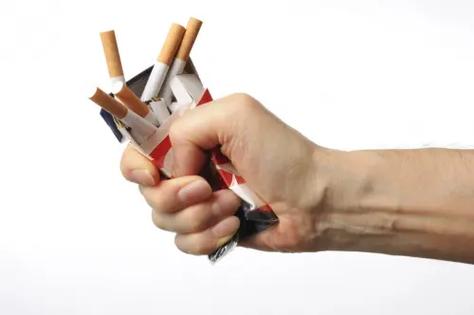Title: The Unseen Victims: How Secondhand Smoke Endangers Exhibition Center Staff
Exhibition centers are bustling hubs of innovation, commerce, and cultural exchange. They are the stages upon which industries showcase their latest advancements, where art is celebrated, and where global connections are forged. For the thousands of staff who work within these vast complexes—from event coordinators and security personnel to janitorial crews and booth attendants—the environment is their office. Yet, amidst the gleaming displays and vibrant crowds, a persistent and invisible health hazard often lingers: secondhand smoke. Despite the proliferation of smoke-free laws in many public spaces, exhibition centers frequently remain loophole-ridden environments where staff are chronically exposed to the toxic cocktail of chemicals in secondhand smoke, posing severe risks to their health and well-being.
The Permeating Hazard in a Confined Ecosystem
The very architecture of large exhibition halls, with their high ceilings and vast open floors, can create a deceptive sense of dilution. However, modern ventilation systems, no matter how advanced, are not designed to eliminate the complex mixture of over 7,000 chemicals found in tobacco smoke, hundreds of which are toxic and about 70 that can cause cancer. Smoke does not simply vanish; it diffuses, forming harmful concentrations in certain areas, particularly near designated smoking zones that are often placed near employee break rooms, entrances, or loading docks.
For staff, exposure is not a matter of a fleeting encounter. An event coordinator might spend 10-hour days for a week-long convention, constantly moving through the hall, passing through smoke-prone zones. A security guard stationed near an entrance must endure the continuous plume from attendees stepping outside for a cigarette. Janitorial staff face a double threat: airborne exposure during their shifts and the residue—known as thirdhand smoke—that settles on carpets, curtains, and exhibition materials, which can be stirred up during cleaning or re-emit toxic gases over time. This constitutes a form of involuntary, occupational exposure that is both prolonged and inescapable.

Deconstructing the Smoke: A Chemical Assault
Secondhand smoke is a combination of sidestream smoke (the smoke released from the burning end of a cigarette) and exhaled mainstream smoke. Sidestream smoke is often more toxic than mainstream smoke because it is generated at lower temperatures and contains higher concentrations of many carcinogens.
For the non-smoking staff inhaling this mixture, the health consequences are grave and well-documented by global health authorities like the World Health Organization (WHO) and the Centers for Disease Control and Prevention (CDC). The immediate effects are often irritative: stinging eyes, nasal irritation, headaches, sore throat, and dizziness. These are not mere inconveniences; they can impair concentration and comfort throughout a long workday.
The long-term consequences are far more sinister. Chronic exposure to secondhand smoke significantly increases the risk of developing life-threatening conditions.
- Cardiovascular Disease: Exposure to secondhand smoke causes immediate damage to the circulatory system, increasing heart rate, blood pressure, and the risk of blood clots. Over time, it accelerates the development of atherosclerosis (hardening of the arteries), leading to a 25-30% increased risk of coronary heart disease and stroke.
- Lung Cancer: Non-smokers exposed to secondhand smoke at home or work increase their risk of developing lung cancer by 20-30%. For exhibition center staff, this is not a statistical abstraction but a tangible occupational hazard.
- Respiratory Illnesses: It impairs respiratory function, exacerbating asthma in adults and causing new-onset asthma in those previously unaffected. It also leads to a higher frequency of chronic bronchitis, pneumonia, and reduced lung function.
- Other Cancers: Links have been established between secondhand smoke and an increased risk of cancers of the larynx, pharynx, brain, bladder, rectum, and stomach.
Beyond the Physical: Economic and Ethical Implications
The harm extends beyond individual health, creating ripple effects that impact both the employees and the exhibition centers themselves.
Ethically, the situation presents a stark dilemma. Every employer has a fundamental duty of care to provide a safe working environment, as mandated by occupational health and safety regulations in most countries. Knowingly allowing continuous exposure to a Class A carcinogen could be construed as a failure of this duty. Staff, who are there to earn a living, are effectively forced to choose between their health and their paycheck—a choice no one should have to make.
Towards a Safer, Smoke-Free Future
The solution is clear, effective, and overwhelmingly supported by public health evidence: the implementation of comprehensive 100% smoke-free policies.
Such policies are not punitive; they are protective. They create a healthier, more inclusive, and more pleasant environment for everyone. Exhibition centers can support this transition by providing resources for smoking cessation to both their employees and attendees, demonstrating a commitment to holistic well-being.
The innovation and progress displayed on the exhibition floor should be matched by a commitment to modern, responsible workplace safety practices. The health of the staff—the very people who keep these centers running—must not be compromised. By clearing the air of secondhand smoke, exhibition center management can ensure that the only thing their employees are exposed to is the inspiring atmosphere of human achievement, not a preventable, toxic hazard. Protecting them is not just a legal obligation but a moral imperative.










